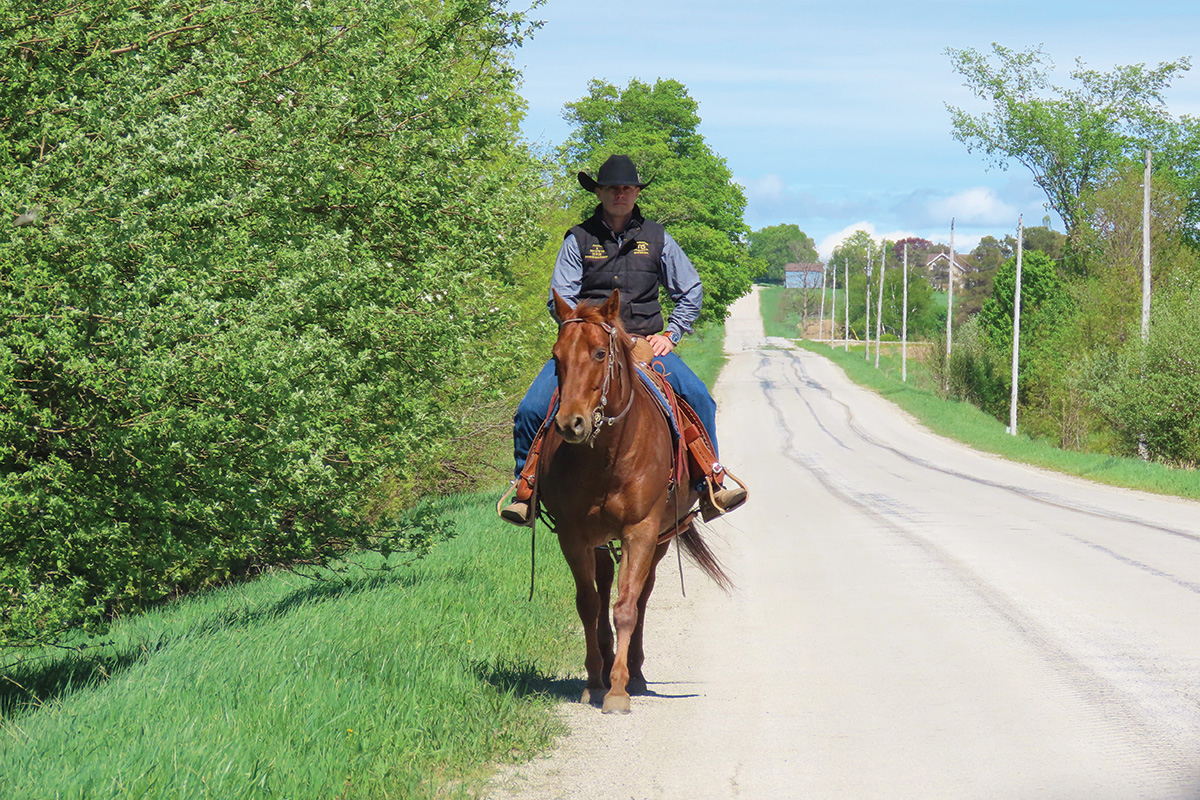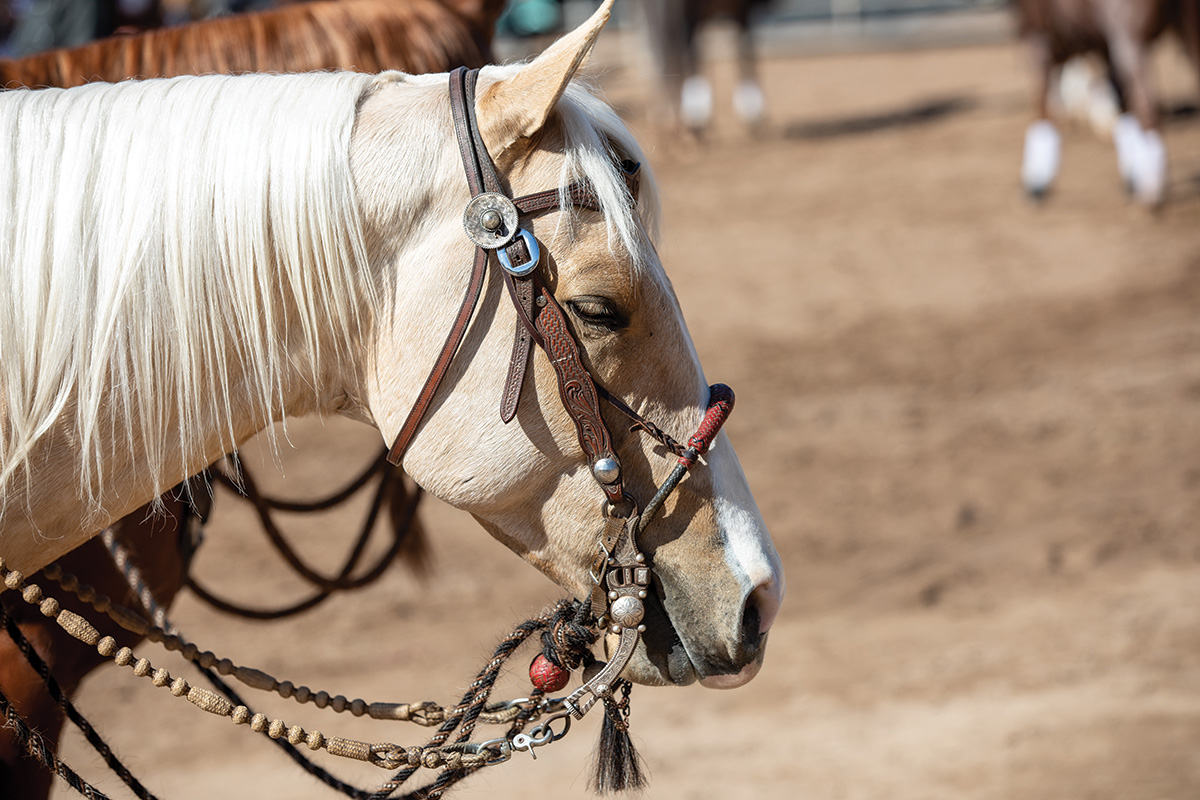These four common horse training mistakes are easier to catch and correct when you’re aware of them.
1. Boring Your Horse
This problem is becoming more common all the time. It usually comes from a good place on the part of the trainer; he or she is trying to be thorough and cover all the necessary training steps, then repeat them until the horse has it down pat.
Although repetition is important when it comes to training horses, non-stop repetition is boring, takes away a horse’s desire to learn, and makes the training uninteresting. Think about the most boring teacher you ever had in school, and you probably get the picture.

Start to think in terms of quality instead of quantity when it comes to training. When you’re getting a good response from your horse, move on from that lesson for the day and do something else. Also try mixing in new lessons or putting little twists on old ones to change things up.
2. Only Trail Riding or Only Riding in an Arena
If you always ride in an arena, you stand a pretty good chance of ending up with a horse that knows a lot of maneuvers and handles well in a controlled environment, but he’s probably lacking in overall life skills because he hasn’t been exposed to much.
If you always ride in a straight line on a trail ride, you will likely have a horse that is very quiet and has been exposed to lots of things, but probably doesn’t handle very well—and he likely steers like a big cruise ship.

You need both types of training. You don’t need an actual arena to do what I’m going to refer to here as “arena-type exercises.” To have a well-rounded horse, you should work on improving suppling, steering, leg-yielding, and all the other exercises that you might do in an arena that will get your horse well-trained and handy.
You also need to spend time riding your horse on the trails to expose him to the world and to mix things up. Better yet, practice your arena exercises on the trail to make for a really well-rounded horse.
3. Too Many Programs
With so much horsemanship information available today from so many different sources, it’s very easy to get swamped with information and overwhelmed. This becomes a problem is when you take all this information and jumble it together, or even worse, constantly change the program you’re using.
Not all horsemanship programs fit together, and thinking you’re going to throw everything into a big bowl and mix it together often isn’t that effective. Think of it this way: If you add chocolate chips to a pancake mix, you have a slightly different type of pancake, which is fine. If you add onions, trout, and a bag of chips, it’s probably not going to be a very good mix, even though all those things are good on their own.
As you become more experienced, you can add little parts from different programs, but in the beginning, it’s usually better to stay the course with the program that you’re planning on using.
Constantly changing programs can be the most damaging because the horse never gets a chance to succeed. If every lesson is something completely different, he never gets a fair chance to learn anything properly.

This would be no different than if someone tried to teach you five new languages at the same time; chances are, you’re going to be overwhelmed and throw your hands up in frustration. I have seen several people take this approach with their horses, and they often end up with a horse that shuts down because he feels that he never gets a win and has never done anything right. Some horses will take it harder and completely blow up because they’re so exasperated.
I’m not saying that you can’t learn from everyone. But you need to stay the course with your training if it’s working and make small changes as you go instead of constantly making big changes.
If what you’re doing isn’t working, then you can make some bigger changes as needed. Also, as you get more experienced, you’ll know what can be added into your program with good results.
4. Tack or Equipment “Quick Fix”
Of course, you should use good tack and equipment that fits properly and is suitable for the job you’re trying to do.
What I’m referring to here is constantly looking for that one tool that’s supposedly going to fix everything with your horse. We all know that person who’s always buying a new bit, is constantly changing saddles, and is looking for every new training contraption on the market to fix the problems they’re having with their horse.
Switching equipment can help in some cases, but more often than not, the changes are minor. The main problem that I have with this isn’t so much that the person is changing equipment, but that they’re putting the focus and effort in the wrong places.

Assuming your horse is sound and healthy, 99 percent of the time the solution to training issues rests with you, his trainer. I can’t begin to tell you the number of times people have told me they were going to buy something new to fix a problem when it couldn’t have been more obvious that the person was making a training error.
While you shouldn’t be opposed to changing equipment if you’re having a problem, ask yourself honestly if you could be making a training error that is causing the problem. It’s pretty hard to buy the solution to a training problem—it’s likely going to be matter of working on yourself and your horsemanship.
What to Do with the Knowledge of Common Horse Training Mistakes
By being aware of the mistakes that are frequently made when training horses, you can spot the traps more easily and avoid them. I hope these tips help you in your horsemanship journey.
More Horse Training Advice from Jason Irwin
◆ Jason and Bronwyn Irwin Horsemanship Website
◆ Teach Your Horse to Stand Still While Mounting
◆ Training Your Horse to Cross Water
This article about common horse training mistakes appeared in the October 2023 issue of Horse Illustrated magazine. Click here to subscribe!





